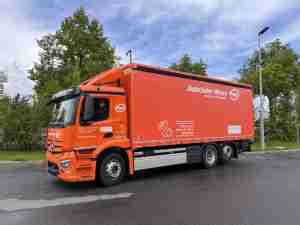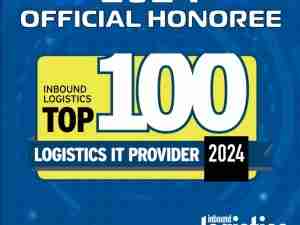"We operate in a global freight and logistics environment that is considerably more dynamic and complex than it has been in the past," says Gander. "This is especially true in the current worldwide economic situation where new business paradigms are increasingly necessary to meet existing and future business challenges. The entire freight forwarding process is evolving as global economic changes occur, and today requires more advanced and efficient IT tools to support these market dynamics."
Gander believes there are a number of IT solutions available that can be applied across a wide scope of business functions that can automate and integrate various company processes and cohesively manage them throughout the entire freight forwarding process. 'The optimal solution involves installing an integrated ERP-like software system that marries the various disciplines both horizontally and vertically throughout a company's global operations," he says. "This is especially important in the freight forwarding industry, where accurate and timely data capture is such an integral part of the supply chain process as it relates to running the entire company ' from sales prospecting, to quotes, to operations, to finance, to customer notification -- a cohesive, optimized logistics process.'
Gander identifies seven ways that IT optimization helps ensure increased supply chain functionality and increases efficiency for global freight forwarders:
Provides a Consistent SOP Process: In too many cases today there are fragmented communications solutions in a disparate global operating system that may serve one business segment more so than another, states Gander. This requires multiple data entries and is redundant in nature. A single SOP system for supply chain visibility can access necessary shipment data and integrate information across business functions, saving time and creating companywide efficiencies. With integrated information, sales reps can enter critical data that is used to facilitate increased sales and customer service by monitoring project status and meeting customer deadlines, while operations management can utilize the same, uniform information for reporting and oversight without requiring additional data entry. IT optimization provides cross-functional management visibility as a by-product of the sales effort, but is also an invaluable communications tool for ongoing operations.
Increases Ease of Training: Ongoing training of changing IT system methods is critical to effective global forwarding operations. The establishment of a single integrated IT system through one provider permits a more effective and freight-specific systems training process across departments, business functions and company branches. This can provide efficiencies for both company employees and customers that utilize your training manuals on-site, or on a remote or on-demand Web-based basis.
Creates Deeper Customer Profiles: The sales and marketing process is the first contact with the customer/prospect your company has and a single, customer-specific operational profile of the customer and shipment parameters and variables can be an invaluable operating tool. Changing customer organization details, contacts, and procedures once a logistics process is underway can be an administrative nightmare with multiple data systems within a company. A single and comprehensive data system with a common point of customer input ensures continuity for the entire team, which has access to the same updated information to ensure a seamless flow of quality information. A properly integrated customer profile does not require sales to send multiple memos, but rather enables the system to automatically inform operations of how to most efficiently manage that account regardless









